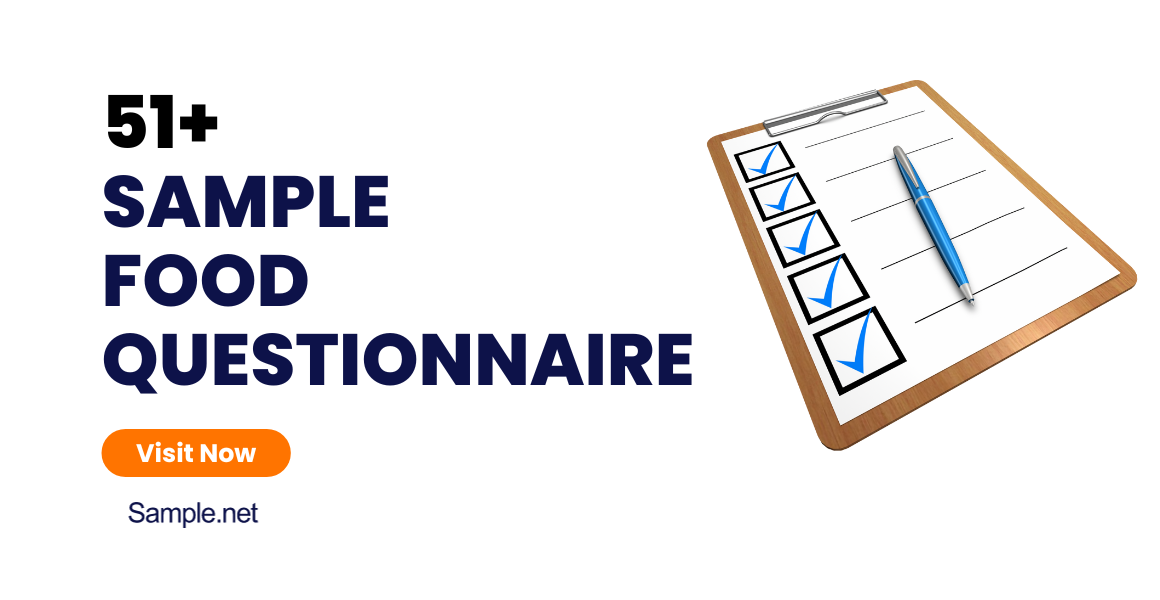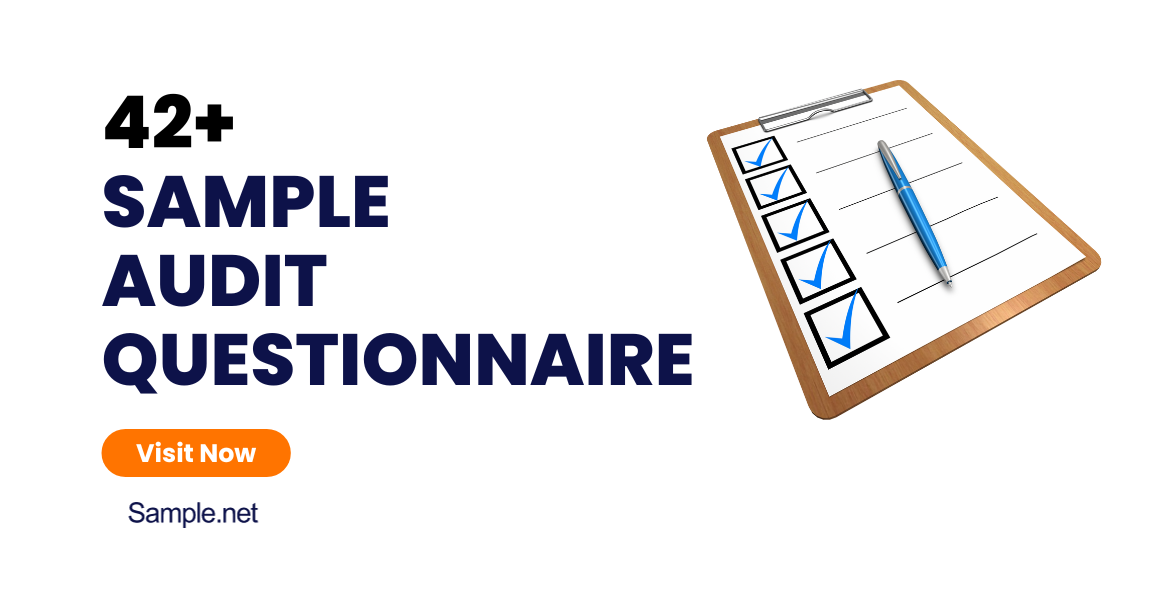A food questionnaire can be used for a lot of purposes by a variety of businesses in the food service, hospitality, catering, and restaurant industry. Developing a food questionnaire is…
continue readingResponses will vary depending on the content, design, and method of delivery of the research questionnaire to your respondents.
In this article, we will discuss research questionnaires, types of questionnaires, and how to write a good and effective research questionnaire.
According to the Business Development of Canada, “market research is crucial for your success whether you’re entering a new market, looking for customers or launching a new product.”
35+ Sample Research Questionnaires
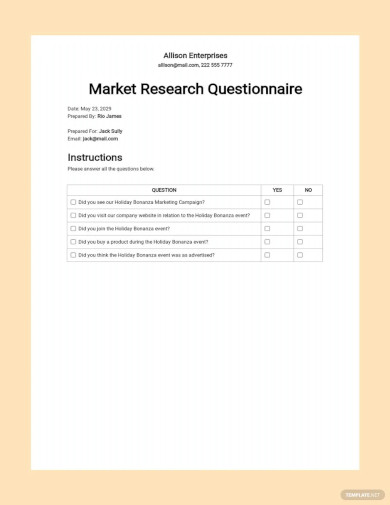
Market Research Questionnaire Template
download now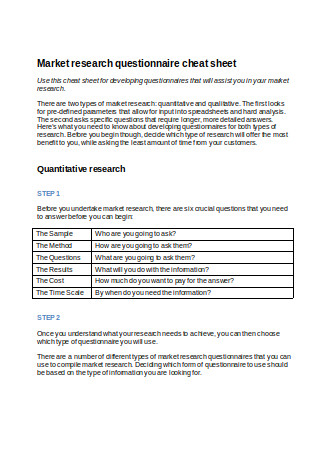
Market Research Questionnaire Cheat Sheet
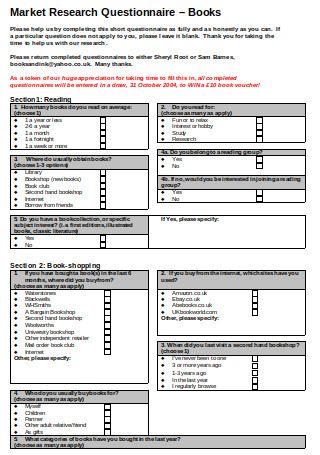
Market Research Questionnaire Sample
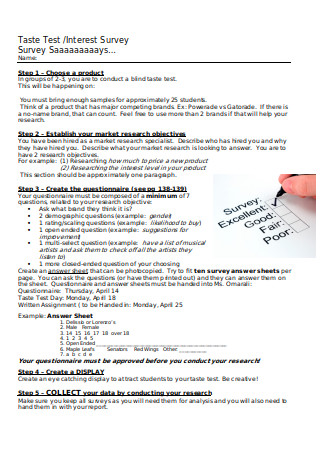
Market Research Assignment – Survey

Research Protocol Safety Survey
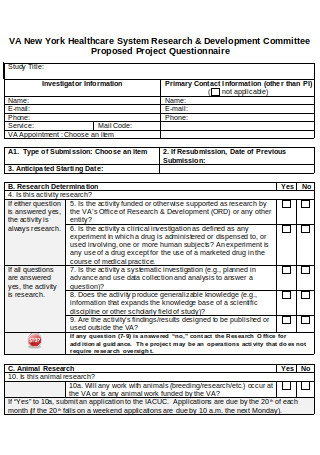
Proposed Project Questionnaire
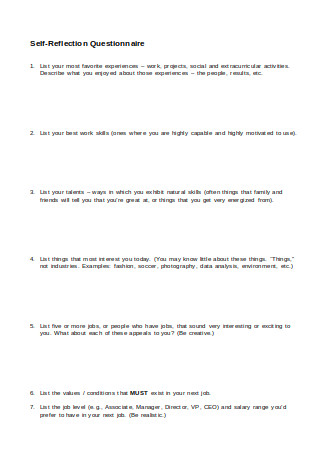
Self-Reflection Questionnaire
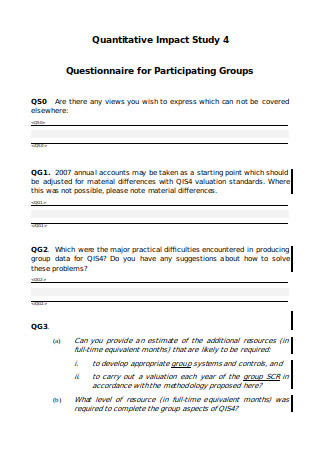
Quantitative Impact Study Questionnaire
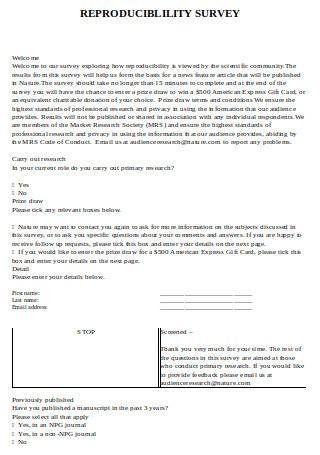
Reproduciblility Survey
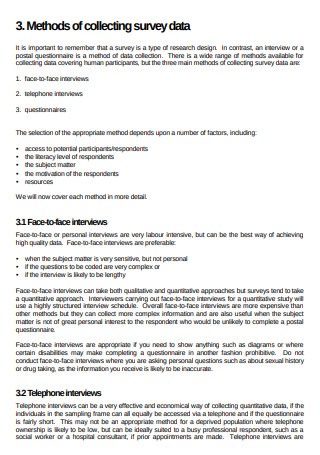
Research Design Service Questionnaire
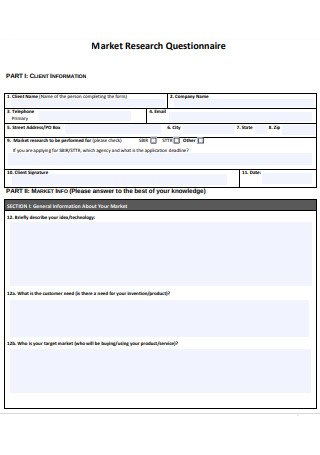
Market Research Questionnaire
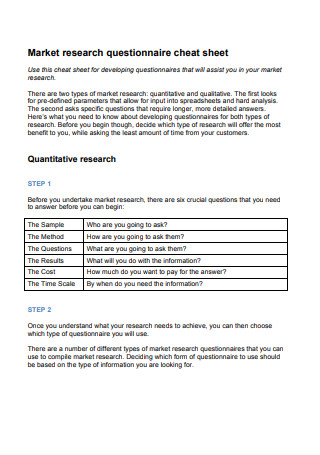
Market Research Questionnaire Cheat Sheet in PDF
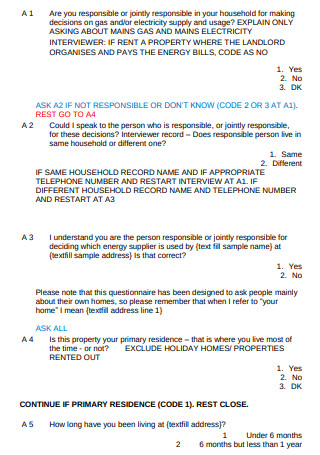
Energy Market Survey Questionnaire
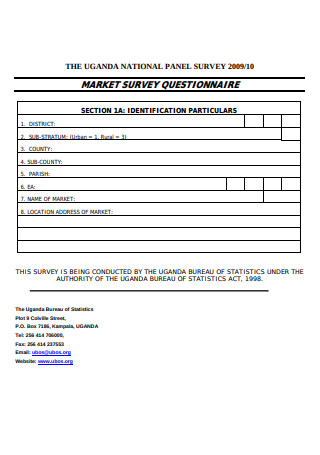
Market Survey Questionnaire
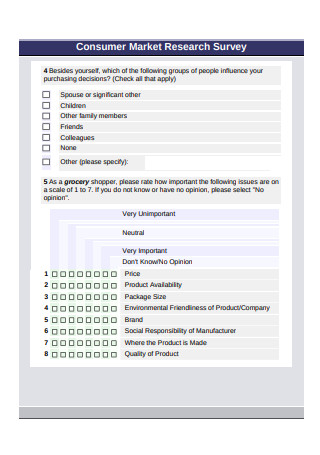
Consumer Market Research Survey

New Product Pricing Questionnaire

Fundamentals of Survey Research
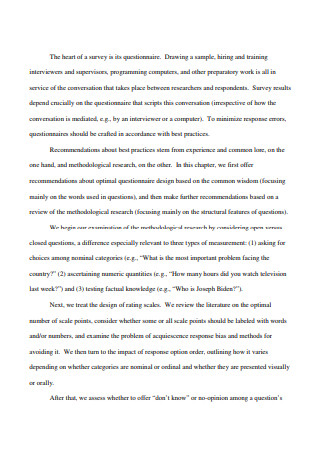
Question and Questionnaire Design
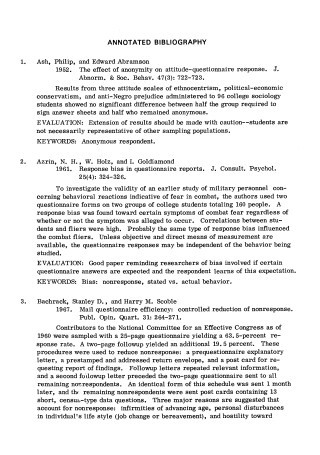
Questionnaires – for Research
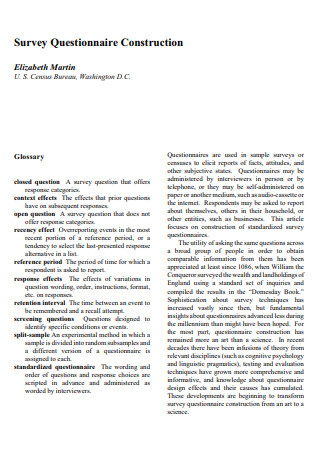
Survey Questionnaire Construction

Questionnaire Design Backbone of Research
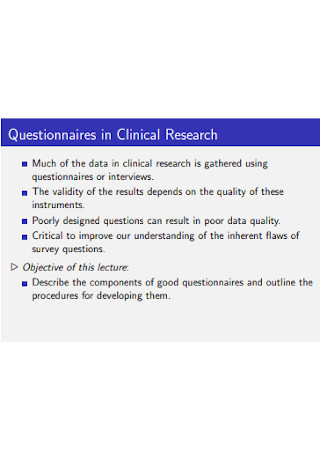
Questionnaires in Clinical Research
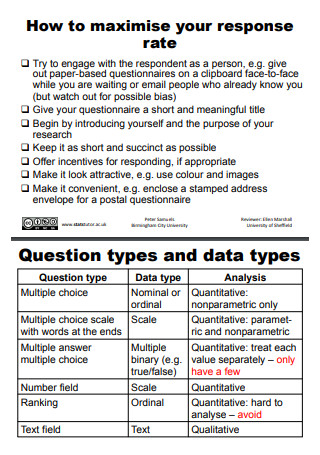
Questionnaire Design
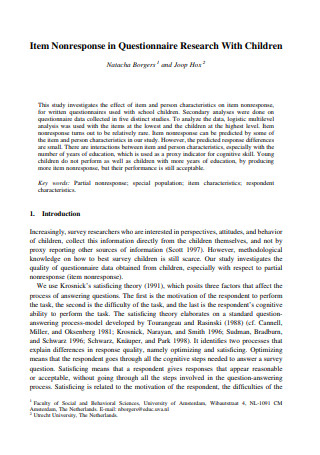
Questionnaire Research With Children

Questionnaire Survey of Scientists
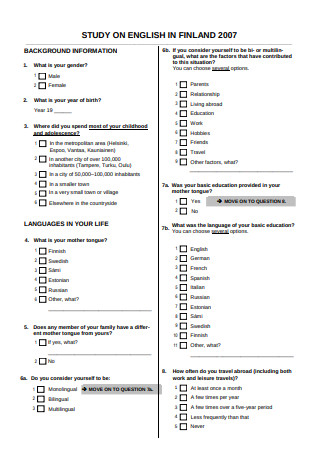
Sample Research Study Questionnaire
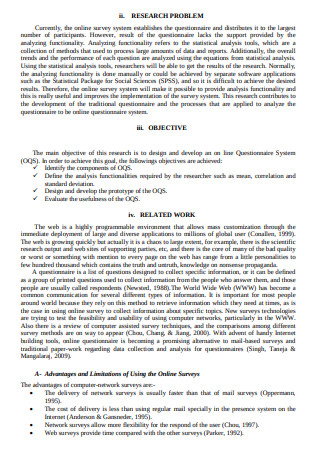
Data Design and Analysis for Survey
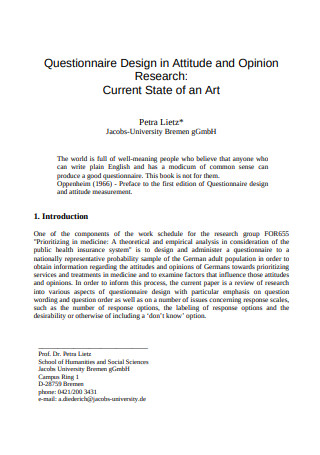
Questionnaire Design in Attitude and Opinion Research
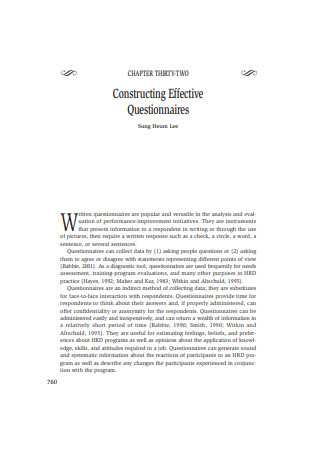
Constructing Effective Questionnaires
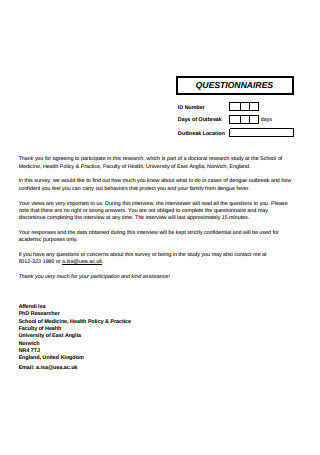
Doctoral Research Study Questionnaires

Questionnaires in Second Language Research

Questionnaires Pretesting in Marketing Research
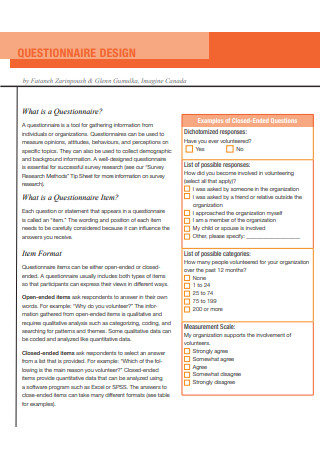
Questionnaire in Research Design
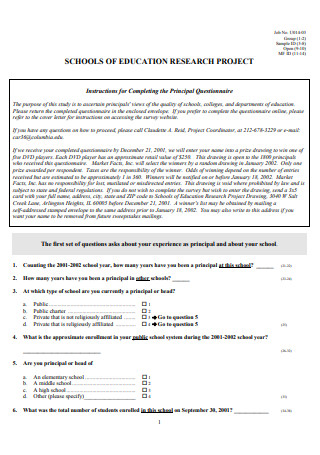
Schools of Education Research Project Survey
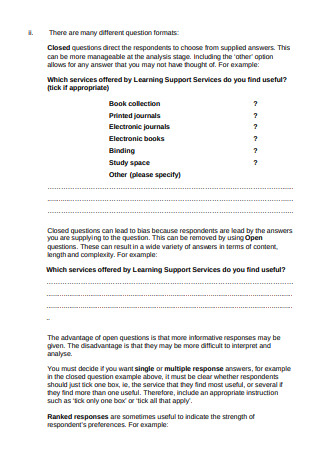
Simple Research Questionnaires
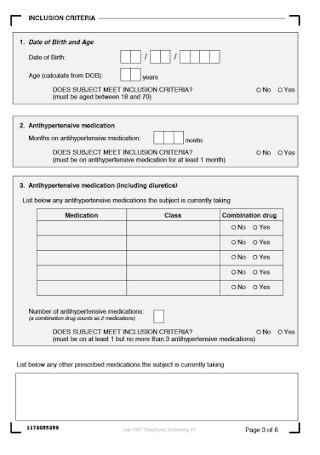
Questionnaires in Clinical Research
What is a Research Questionnaire?
A research questionnaire is a tool used in research, which typically contains a list of questions for your respondents to answer. These questions can be a closed-ended or open-ended question, rating or scale, among others.
Research questionnaires are used to gather information from people about their opinions, lives, perspectives, outlook, suggestions, attitudes, preferences, background, values, and experiences. Based on the answers of your respondents, you will be able to derive insights from your target respondents, in line with your research topic or problem.
For businesses, your customer’s responses in the questionnaire will help you understand them better – their attitudes, buying process, values, preferences, and more. By understanding your customers’ buying process, you can develop and improve your products or services, and certain business aspects of your company, aligned with your target market.
Questionnaires are typically used in quantitative research.
According to Pew Research, the “most important part of the survey process is the creation of questions.”
Types of Research Questionnaires
There are different types of research questionnaires which will be discussed in this section. Here, we will be discussing the most common types of research questionnaires.
Open-ended Questions – Open-ended questions usually have a text box or line where respondents write out their answers. There is no right or wrong answer for this type of question. Researchers usually use open-ended questions to hear and analyze the respondent’s attitudes, feelings, perspectives, and opinions in great detail. The answers from open-ended questions are hard to put into statistics though as it cannot be analyzed quantitatively. That’s why most of the time researchers use open-ended questions to substantiate the resulting statistics, observations, trends, and conclusions in the research study. According to Open Text, “Open-ended items are useful when researchers do not know how participants might respond or want to avoid influencing their responses.” Source: Open Text
Multiple Choice Questions – These are questions that have predetermined choices for respondents to choose from. Depending on the question, the respondent can choose one or more options. The number of choices that can be chosen should be clearly stated in the questionnaire.
Rating Scale – These questions let the respondent rate a certain answer, which will serve as the answer, on a scale of 1-5, 1 – 10, or 1 – 100. You can usually see Rating Scales Questions used in customer feedback surveys or customer satisfaction surveys.
Likert Scale – Likert Scale questions let respondents express their feelings, views, and opinions on a certain item by agreeing or disagreeing with it. Respondents can usually choose from these options: strongly agree, agree, neutral, disagree, and strongly disagree.
Your research questionnaires must depend on what your research project is, the project objectives, the research problem statement, and your target respondents. There are a lot of sample research questionnaires you can use as a guide or reference. Here, you can find the research questionnaire that will fit your needs. These research questionnaires are varied and cover a wide range of industries. These research questionnaire templates can be easily customizable depending on your research project. It can also be downloaded in different formats such as Microsoft Word, PDF, and Adobe Illustrator.
Distinctions Between Surveys, Polls, and Research Questionnaires
A survey is a broader data collection method involving the use of questionnaires, interviews, focus group discussions, observation, to name a few. A questionnaire is a form of a survey or a tool used in surveys.
Questionnaires are typically one of the most common types of surveys; that’s why some people use surveys and questionnaires interchangeably. So, you must be able to distinguish the tree from the forest, figuratively speaking. Questionnaires involve a list of questions that the recipient needs to answer, whether it is for a research study or not.
On the other hand, polls usually contain only one question, like those polls you can create in the group chat on Facebook messenger. Compared to surveys that usually have plenty of questions, polls only have one question to answer. Polls are usually preferred by those who want to get answers real quick. By running a poll, you can easily get the general opinion, perspective, views, and background of your respondents. Polls are usually a good choice if your question can be answered by a “yes” or “no” or is a multiple-choice question. Having one question is also an advantage since people can just automatically tick off their answers.
Surveys typically involve a lengthy, detailed and in-depth research questionnaire. Research questionnaires have several questions that respondents need to provide answers to.
Although polls are quick and easy, you don’t get a lot of insights from your respondents, since it is just a one-off, closed-ended question, and answer. There’s not a lot of data that can be derived from polls. But one advantage of polls is that results can be quickly generated in a matter of minutes or seconds. While results from the survey usually take time to be generated and analyzed. Based on the answers of your respondents in the survey, you still need to do statistics, analyze the data, and extract trends and conclusions from the data. One major advantage of surveys though is that it can generate more accurate and reliable conclusions.
In the succeeding section, we will be discussing how to craft a good and effective research questionnaire.
How to Write a Good Research Questionnaire
One of the most crucial parts of any research project is the methodology — the research tool to be used, and how the data will be gathered, administered, and analyzed. If there is something wrong with your methodology, the entire research will be in jeopardy, or worse, put at risk of failing.
If you’ll be using a questionnaire as your main research tool, there are several things that you need to keep in consideration to write a good and effective questionnaire.
Ask questions that will get the responses you need for your research – One important element of an effective questionnaire is the questions that you ask your respondents. You have to strategize when you’re making the research questionnaire. Your questions should revolve around your research problem and should be in line with the goals, purpose, and objectives of your research. And you should be able to come up with questions that
Your Research Questionnaire Design Matters – If you think that the design doesn’t matter, think again. The design and layout of your research questionnaire is still a factor in the success of your research project. Are you going to use a rating scale or closed-ended questions? Or would varied responses from open-ended questions be more effective for your research? Or a mixture of all these? Before undertaking the research project, you should be able to decide what will be the design of your research questionnaire that will give you maximum results.
Ensure the logical flow of the questions and the organized structure of your questionnaire – Your questions should proceed from one to the next in a logical flow. If applicable, you can divide your questionnaire into sections, with the related questions grouped. Ensure the organized and logical structure of your questionnaire. There should be a clear, logical and organized flow and structure to the overall design of your questionnaire.
Use everyday language that average readers can understand – By using simple, everyday language, your respondents won’t need to pull up a dictionary when answering the questionnaire. Make sure that your questions are clear, understandable, and unambiguous, and are exactly what you want to ask. Respondents should be able to understand what your questions mean.
Avoid double-barreled questions – Avoid questions that mean two separate things, which is commonly termed as double-barreled questions. Your question should only focus on one central concept or meaning, to avoid confusion. You can break down the question into two separate questions.
Test your research questionnaire – Before the actual conduct of the study, you should test the questionnaire first, to make sure that you are getting valid responses. The person that you will test it to should ideally be someone that represents your actual respondents. By doing a pilot test, you’ll be able to check whether the research questionnaire is effective in deriving the information that you need in the project.
Gathering of data and analysis of results from the research questionnaire – Identify the method of data collection and analysis of the answers to your respondents. It should be clear what method will you use to generate the insights and conclusions for your research or study.
Set the purpose and expectations of the research project – You should set the purpose of the research project being undertaken. The purpose should be clear to your respondents, why they are answering the questionnaire, and how their answers will greatly help the research study.
Do’s and Don’ts When Making Research Questionnaires
Here are some of the to-dos that you need to follow when making a research questionnaire.
Do consider the method of dissemination of your questionnaire. Aside from the questions, the way you will administer the questionnaire to your respondents, as well as where and when, will also affect the responses that you will receive. Will you be administering it face-to-face for an identified number and group of respondents? Or will you be disseminating the questionnaire online specifically through your website, affiliate website, subscribers, or social media? You have to be able to pinpoint which is the best place or platform for you to disseminate the questionnaire, to generate the best results for your study.
Do research your topic. Look for relevant and related literature for your study. Chances are, another researcher may have conducted a similar study. Refer to the related research study as a guide or reference. Examine how the researcher was able to draw up his or her conclusions, what method did he or she use, and how did he or she administer the study, so you can learn from it. Researching for references and related studies will also help you in conducting your research project.
Do make sure that your research questionnaire is unbiased and will not prejudice any gender, religion, or ethnic minority. Make sure that your research questionnaire is ethical and professional. It should be free from bias and prejudice.
Do identify who is your target respondents for the study. Depending on your study, you might use random sampling, to ensure that your target respondents are representative of the certain demographic you’re targeting for the study.
Do put clear instructions. Include clear instructions as to how the respondent will answer or fill up the research questionnaire. If the respondent should only pick one option for each question, make sure that the instructions say so. Or if the respondent should write the letter corresponding to his or her answer, it should also be there in the instruction. For the rating scale, it should be clear in the instructions which rating is the highest, and which one is the lowest. You can also put a description beside the number of the rating scale, for example, 5 – Excellent, 4 – Above Average, 3 – Average, 2 – Below Average, and 1 – Poor.
Do keep the questionnaire sample brief and straight to the point. Lengthy questionnaires are time-consuming for respondents. So unless it is necessary, keep your questionnaire brief. Only choose questions that are relevant to the study, help you solve the research problem, and lead you to meaningful insights about your target respondents. Questions should also be straight to the point; no point in beating around the bush.
Do put yourself in the shoes of respondents. Assess how the respondents will answer the questionnaire. Always see yourself in the shoes of your respondent.
Do always be professional and be ethical. Before, during and after the research study, always maintain a high sense of professionalism. If the results and conclusions of the study are contrary to what you expect or want, you should still reflect and present the actual results of the study no matter what. Practice professional ethics and honesty at all times.
On the other hand, these are the things that you shouldn’t do when making a research questionnaire.
Don’t complicate the questionnaire. If the question means different things to people, you would have to revise and narrow down your question, so that its meaning is clear and universal. Make sure that the necessary fields to be field up or options to be chosen should be clear in the questionnaire.
Don’t use technical terms and jargon. As much as possible, don’t use jargon that only a few specialists in their field can understand. Since the questionnaire will be administered to people of various ages and backgrounds, the questions should be understood by the public.
Wrapping Up
These are just some of the things to keep in mind when you’re making a research questionnaire. If you need more ideas, you can look at these research questionnaire templates for inspiration and guidance. By conducting a research project, you will be able to derive valid and reliable conclusions. Based on the insights from your study, you can better solve a specific problem at hand, serve your customers, develop your products and services, and see a solution that wasn’t clear before.

